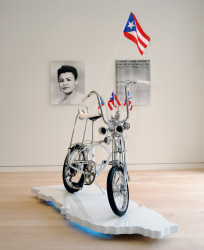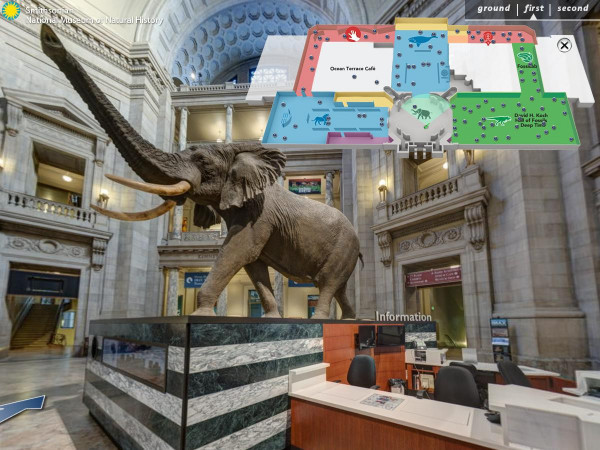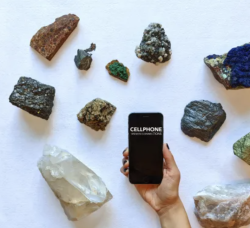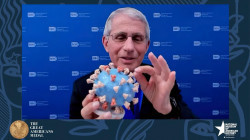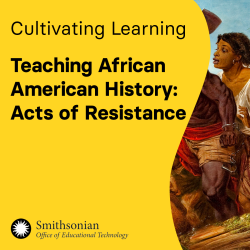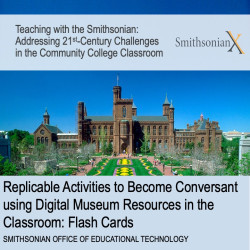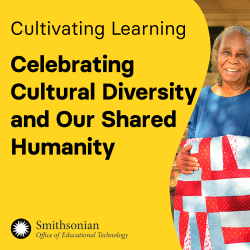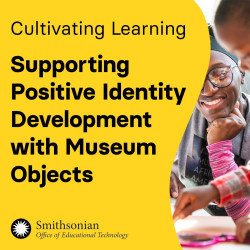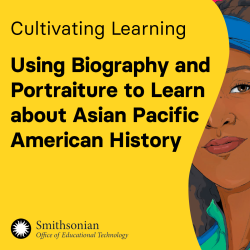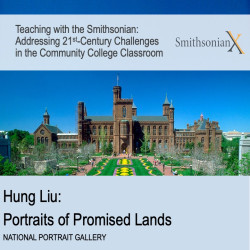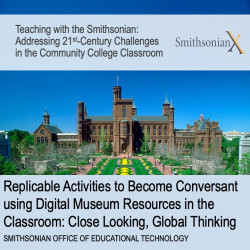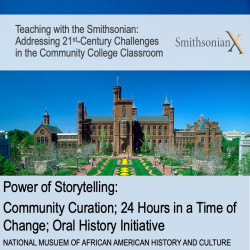Philippa Rappoport
I work in education and engagement, teacher professional development, and outreach at the Smithsonian Office of Educational Technology (OET), and have a particular interest in developing and producing trainings, programs, teaching techniques, and platforms that foster deep learning and contribute knowledge to improve practices in museum and preK-16 education and engagement. At OET over the last decade+, I created digital assets for schools, families, and new immigrant English Language learners to complement teacher professional development and pan-Smithsonian programming, including Learning Lab teaching collections, YouTube videos with tradition bearers, a handmade family stories book-making website, and online heritage tours.
Philippa Rappoport's collections
2024 Smithsonian-Montgomery College Faculty Fellowship Program - National Museum of African American History and Culture
 Philippa Rappoport
Philippa Rappoport
2024 Smithsonian-Montgomery College Faculty Fellowship Program - National Museum of American History
 Philippa Rappoport
Philippa Rappoport
2024 Smithsonian-Montgomery College Faculty Fellowship Program - National Portrait Gallery
 Philippa Rappoport
Philippa Rappoport
Learning Lab Training Collection on the Theme: “Facing the Complex, Multiple Challenges of the 21st Century"
 Philippa Rappoport
Philippa Rappoport
Teaching African American History: Acts of Resistance | Cultivating Learning
 Philippa Rappoport
Philippa Rappoport
Replicable Activities to Become Conversant using Digital Museum Resources in the Classroom: Flashcards
 Philippa Rappoport
Philippa Rappoport
Student Activity: Exploring Luis Cruz Azaceta's "Shifting States: Iraq"
 Philippa Rappoport
Philippa Rappoport
Digital Storytelling as a Tool for Participatory Research and Audience Engagement
 Philippa Rappoport
Philippa Rappoport
Learning Lab Training Collection on the Theme: “Social Justice in the Time of Pandemic"
 Philippa Rappoport
Philippa Rappoport
Supporting Positive Identity Development with Museum Objects | Cultivating Learning
 Philippa Rappoport
Philippa Rappoport
Using Biography and Portraiture to Learn about Asian Pacific American History | Cultivating Learning
 Philippa Rappoport
Philippa Rappoport
Luis Cruz Azaceta's "Shifting States: Iraq"
 Philippa Rappoport
Philippa Rappoport



